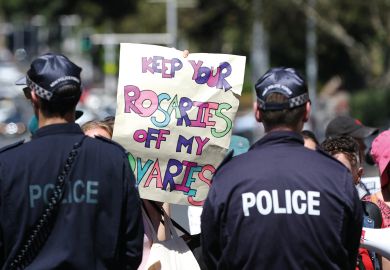This book, by Tal Golan, deals with the history of expert scientific evidence in England and America. It is particularly topical in light of the recent debate about medical experts in baby-bashing cases. Those without any scientific or legal training will have no difficulty following the arguments, and the social history contained in the various cases is of enormous general interest.
The starting point is the case of Folkes v Chadd in 1781. Expert evidence had been allowed for centuries, though it took different forms. Jurors were selected because of their intimate knowledge of the locality and of the intentions of the parties involved. Thus, members of a medieval jury functioned as witnesses, investigators and decision-makers. On other occasions, special expert jurors were assembled.
Trade disputes were probably the most frequent cause for summoning expert jurors. Ascertaining whether a guild's trade regulations had been violated required a jury of booksellers, wine merchants or fishmongers, to name but a few. Foreigners could request a special jury, some of whom would be from their country, so that they might explain his or her particular views. This right was extended to Jews (but not gypsies), to Welshmen (but not Scots), to clerics, university scholars, merchants and other guild members. A third class of expert juries included all-female juries in cases involving sexual assault and pregnancy, the most common being a jury of matrons - either married women or widows - experienced in childbirth. Apart from appointing experts as jurors, the court could nominate them as consultants whose advice the court and the jury could adopt. A further option was for the parties to call them as witnesses to give evidence on their behalf. Not until Lord Mansfield gave judgment in Folkes v Chadd did modern law relating to expert witnesses begin to be established.
Wells-next-the-Sea is a small seaside resort on the Norfolk coast. For centuries it was a safe harbour for ships plying their trade between London and the North East. During the 18th century, Wells became the second largest harbour for the export of malt, and handled considerable imports of coal. However, violent tides and winds deposited silt in the channel, which was removed only by the ebbing tide. The reclamation of coastal marshlands and the erection of embankments by landowners clogged up the harbour and the quay became inaccessible. The Harbour Commissioners went to court to seek removal of the embankments. There were a number of trials, accounts of which make riveting reading, but the case assumes importance in relation to the evidence given by a Mr Smeaton. He was a civil engineer, a scientist and an expert on harbours. His evidence was ruled out on the ground that he was putting forward merely a hypothesis that a natural process caused the silting. But Lord Mansfield would have none of it. He said: "The cause of the decay of the harbour is a matter of science and still more so whether the removal of the bank can be beneficial. On this, such men as Mr Smeaton alone can judge."
The next chapter, "The common liar, the damned liar, and the scientific expert", traces the development of the scientific expert through 19th-century cases. They reflect some disillusionment with the partisanship of the witnesses. There is mention of attempts by scientists to seek agreement among themselves and to persuade the courts that the absence of individual observation was not a good reason for rejecting expert opinions.
The development in the acceptance of expert evidence occupies the rest of the book. At times it is unnecessarily detailed. It emphasises that an expert has not only to have proper credentials but also that his opinion should have a sound scientific basis and to have been accepted, tested or subjected to peer review. In the end, it is for the judge to rule whether the expert falls into that category and that his opinion is necessary and then for the jury to decide its weight.
This book will be enjoyed not only for its insight into the development of expert evidence but also into the history of industrial relations the cases throw up.
Sir Oliver Popplewell is a retired High Court judge and author of Benchmark.
Laws of Men and Laws of Nature: The History of Scientific Expert Testimony in England and America
Author - Tal Golan
Publisher - Havard University
Pages - 325
Price - £32.95
ISBN - 0 674 01286 0
Register to continue
Why register?
- Registration is free and only takes a moment
- Once registered, you can read 3 articles a month
- Sign up for our newsletter
Subscribe
Or subscribe for unlimited access to:
- Unlimited access to news, views, insights & reviews
- Digital editions
- Digital access to THE’s university and college rankings analysis
Already registered or a current subscriber?



